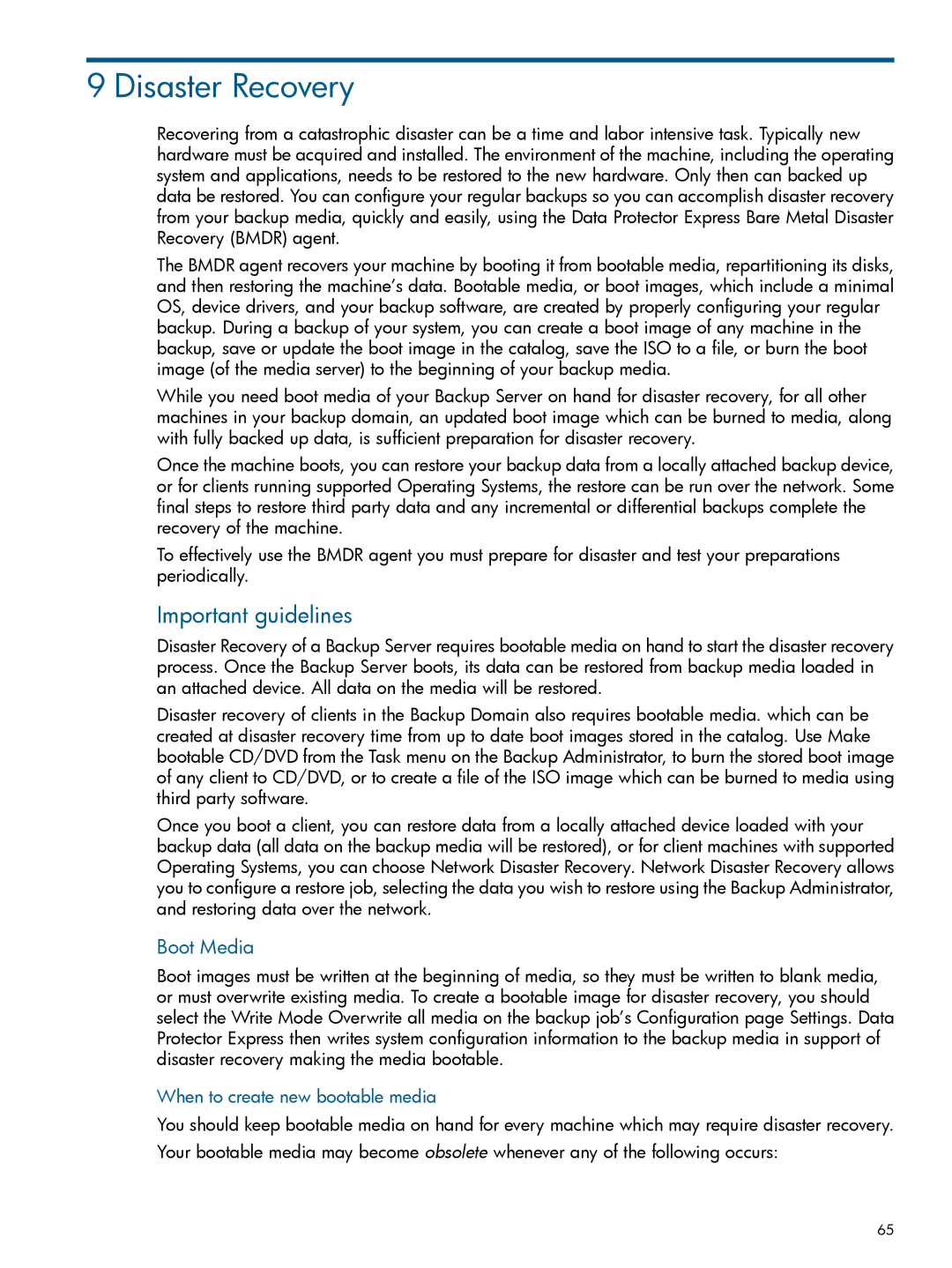9 Disaster Recovery
Recovering from a catastrophic disaster can be a time and labor intensive task. Typically new hardware must be acquired and installed. The environment of the machine, including the operating system and applications, needs to be restored to the new hardware. Only then can backed up data be restored. You can configure your regular backups so you can accomplish disaster recovery from your backup media, quickly and easily, using the Data Protector Express Bare Metal Disaster Recovery (BMDR) agent.
The BMDR agent recovers your machine by booting it from bootable media, repartitioning its disks, and then restoring the machine’s data. Bootable media, or boot images, which include a minimal OS, device drivers, and your backup software, are created by properly configuring your regular backup. During a backup of your system, you can create a boot image of any machine in the backup, save or update the boot image in the catalog, save the ISO to a file, or burn the boot image (of the media server) to the beginning of your backup media.
While you need boot media of your Backup Server on hand for disaster recovery, for all other machines in your backup domain, an updated boot image which can be burned to media, along with fully backed up data, is sufficient preparation for disaster recovery.
Once the machine boots, you can restore your backup data from a locally attached backup device, or for clients running supported Operating Systems, the restore can be run over the network. Some final steps to restore third party data and any incremental or differential backups complete the recovery of the machine.
To effectively use the BMDR agent you must prepare for disaster and test your preparations periodically.
Important guidelines
Disaster Recovery of a Backup Server requires bootable media on hand to start the disaster recovery process. Once the Backup Server boots, its data can be restored from backup media loaded in an attached device. All data on the media will be restored.
Disaster recovery of clients in the Backup Domain also requires bootable media. which can be created at disaster recovery time from up to date boot images stored in the catalog. Use Make bootable CD/DVD from the Task menu on the Backup Administrator, to burn the stored boot image of any client to CD/DVD, or to create a file of the ISO image which can be burned to media using third party software.
Once you boot a client, you can restore data from a locally attached device loaded with your backup data (all data on the backup media will be restored), or for client machines with supported Operating Systems, you can choose Network Disaster Recovery. Network Disaster Recovery allows you to configure a restore job, selecting the data you wish to restore using the Backup Administrator, and restoring data over the network.
Boot Media
Boot images must be written at the beginning of media, so they must be written to blank media, or must overwrite existing media. To create a bootable image for disaster recovery, you should select the Write Mode Overwrite all media on the backup job’s Configuration page Settings. Data Protector Express then writes system configuration information to the backup media in support of disaster recovery making the media bootable.
When to create new bootable media
You should keep bootable media on hand for every machine which may require disaster recovery.
Your bootable media may become obsolete whenever any of the following occurs:
65
